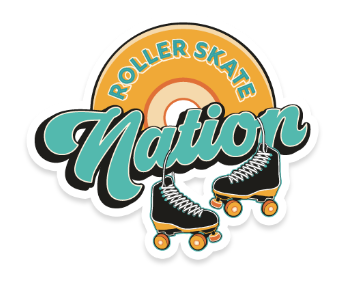Roller Skates Bearings Guide
- How many bearings do I need to purchase for my skate?
You will need 2 bearings per wheel. Therefore quad skates take 16 bearings. Inline skates with 4 wheels each take 16 bearings. Inline Skates with 5 wheels each take 20 bearings.
- What do bearings for roller skates do?
The bearings for roller skates help the wheels move freely on the skate. Generally, the higher "rated" the bearing the better the bearing. However, most non-professional or non-competitive skaters will not need anything above standard skate wheel bearings.
- What does ABEC stand for?
This is an acronym for Annular Bearing Engineers' Committee. This committee determines the ratings for each bearing.The ABEC rating system includes grades 1,3,5,7, and 9. The number determines how much "roll" the bearings has. The higher the number, the longer it will take your wheel to stop spinning after you stop pushing.
- What does 7mm or 8mm mean when it comes to bearings?
Those measurements refer to the inner diameter of the bearing and the size of the axle it is going on. Most the new skates use 8mm axles so the standard 8mm bearings would be needed. 7mm axles are sometimes found on older models and high end skates, so they would need 7mm bearings.
High-end plates like Labeda Proline, Sure-Grip Power-Trac, Sure-Grip Snyder and Roll Line still use an 7mm axle. 7mm axels are fully machined which provides tighter tolerances, meaning less play or wiggle of the bearing on the axle. 8mm axles have lower tolerance, which will allow more play (or wiggle) of the bearing on the axle.
- What size bearings do I need for my wheels?
Many incorrectly assume that your wheels determine your roller skate bearing size. In reality, the size of the axles on your skates determine which size bearings you need. Axles are commonly available in two sizes, 7mm (9/32) or 8mm (5/16). Most current skates are manufactured with an 8mm axle because 8mm bearings and locknuts are more common and readily available.
If you are unsure which size axles are on your skates, you can tell by checking the bearings you currently have to see if they are 7mm or 8mm.
- How do I tell what size bearings are in my wheels?
There are 3 very easy ways to check the roller skate bearing size you have.
- Look at the stamping on the shield of your existing skate bearing. Most will be stamped with 608. This means you have 8mm. If stamped with 627, you have a 7mm bearing.
- You can also tell by the size of the wheel nut. A 9/32" nut will indicate a 7mm bearing. A 5/16" nut will indicate a 8mm bearing.
- Take a number 2 pencil using the eraser side of the pencil. Try sliding the bearing onto the pencil. If it is too big to fit through the center it is a 7mm bearing, but if the same pencil slides right through you have a 8mm bearing.
- How often should I clean and lubricate my bearings?
In a perfect world you should clean your bearings every time you use your skates, but taking the bearings apart and cleaning them is a time consuming and dirty task. So the best way to tell if your bearings need cleaning, is to flip your skates and spin the wheels. Note how freely they spin, and listen for any interesting noises. Crunching and/or grinding means there is dirt or debris and the bearings need to be cleaned. Chirping and/or squeaking noises probably means you should lubricate the bearings.
- How do I clean and lubricate my bearings?
Cleaning and lubricating are not the same thing. There are bearing cleaners and bearing lubricators-please beware of the difference.
If you lube your bearings first it will trap the dirt and particles and make it really hard to clean those bits out. Those particles are what destroy bearings. Do not use WD-40 or anything like that. They leave behind a film that actually collects dirt and dust. Orange 409 cleaner will clean your bearings. Spray the bearings and use newspaper (not rags, they will leave lint behind). Clean them until no more dirt is expelled. Do not rinse with water. Just let the bearings air dry and proceed to lubricating.
Lubricating: Once your bearings are cleaned correctly, it is recommended to apply lubrication to your bearings. The heavier the lubricant (such as Bones Speed Cream) the longer it will last and you won't have to clean and lube your bearings as often.
Browse our available roller skate lubrication and cleaners here.
- How do I keep my bearings performing like new and help them last longer?
- Stay away from water. Water is a skate bearing kryptonite. It results in the lubrication becoming diluted and can eventually cause the bearings to rust. As you can probably guess, rusted bearings are neither fast nor smooth. If you want to go through a puddle for some fun, jump in the car and splash some people on the sidewalk.
- Stay off of the grass. It is recommended that if you are beginner and you are having difficulty stopping that you skate off into the grass. While I will not discount this learning technique, I cannot emphasize enough that you stay off the grass if possible. Kids in particular love to walk or skate into the grass on purpose. Grass is filled with dirt and crud and when these particles get into the bearings, it clogs them up and can cause them to seize up.
- Can you replace the bearings without using a special tool?
Yes you can! Here is a quick video tutorial for how to remove your bearings with or without a tool.
Make sure to only press the center ring of the bearing. If you press the bearing on the side, it may bend it and then it will not roll well.
- What are the benefits of ceramic bearings?
The benefits of ceramic bearings are that they do not rust. They are self cleaning, much lighter than metal bearings, and are durable. They also can withstand higher speeds & acceleration capability. There is less heat friction, and they have a higher spin rate.


